|
•.
Canon EF 50 1.2L
USM Review
Bokeh
Hog Heaven
Peter
Kun Frary
.
.
The 46 degree coverage of the 50mm lens is equivalent to the sweet spot of the human eye, making it the ultimate walk-around lens for full frame cameras. Thus, the venerable 50mm prime lens is often referred to as a normal lens. The natural perspective of this optic makes it easy to pre-visualize images.
Mall Flora | EOS 5D MK II and EF 1.2L USM | F1.4, 1/2500, ISO 160

One of the reasons to own a 50mm lens is for available light photography. At F1.2 you can take pictures unobtrusively in extremely dim light. This fast aperture also results in a bright viewfinder, making it easier to compose. Fast optics also have smooth bokeh (background blur). The soft whirl of an out of focus background makes your subject pop. Finally, a compelling reason to use a 50mm lens is size. Even fast 50mm primes are small and stealthy compared to most zooms.
Canon EF 50
1.2L USM | Killer
weed
for low light
junkies 'n fat cats
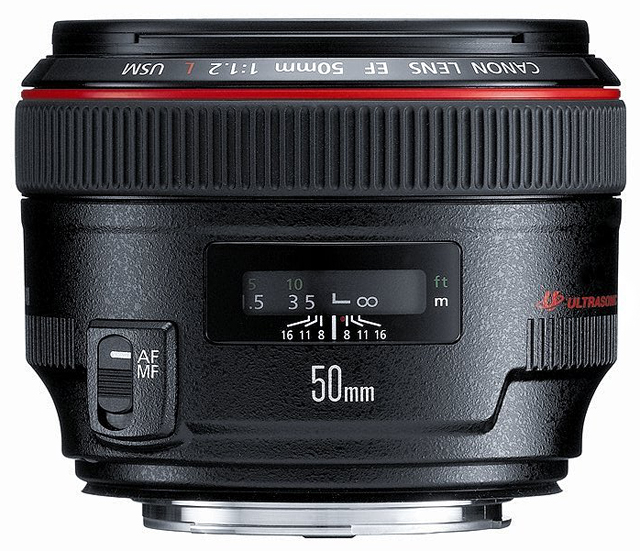
This review consists of my opinions and observations as a hobbyist. No scientific measurements, MFT charts or pixel peeking comparisons will be found here.
 Compatibility Compatibility
The EF 50 1.2L USM lens works on all Canon EOS DSLR cameras, both full frame and APS-C (1.6X), such as the EOS 6D and Rebel SL3. It will also work on EOS R and M series mirrorless cameras with a mount adapter. It does not fit non-Canon cameras such as Pentax, Nikon, Fuji, etc.
 Construction Construction
Introduced January 2007, the EF 50 1.2L USM is an impressive feat of engineering: F1.2 aperture, ring-type USM, beefy construction and weather resistant seals. It has the same degree of sealing as the EF 24-70 2.8L USM: gaskets on the lens mount, under switches, and behind the focus ring. To complete weather sealing, Canon requires the use of a filter.
Build quality is first rate and it feels solid and reassuring in hand. The speckled matte finish black is handsome and stealthy. For a 50mm lens it's heavy (590g). A twist-on hood, storage bag and manual in a dozen languages are included.
Fountain at Ala Moana | EOS
5D, EF 50 1.2L USM | F1.2, 1/4000, ISO 100
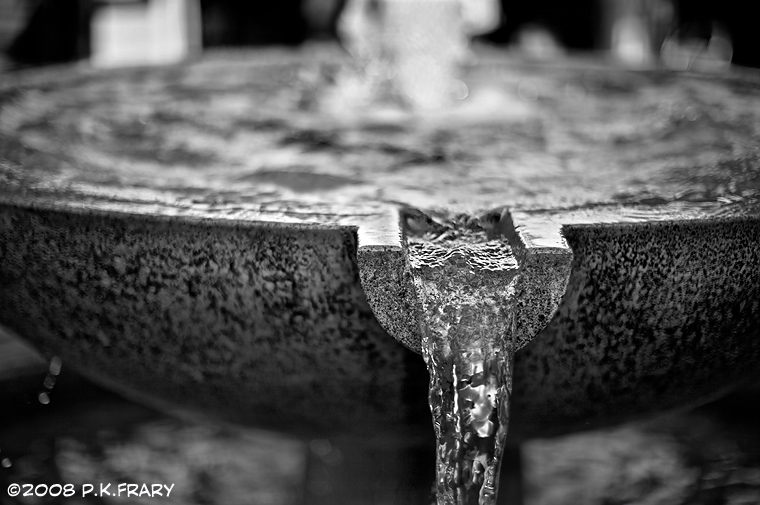
 Auto Focus Auto Focus
A ring-type USM (Ultrasonic Motor) achieves focus by driving the front lens group. AF is reasonably fast and sure-footed on my 6D MK II, 6D and 80D bodies. AF is faster and more reliable than my EF 50 1.4 USM but not as fast or reliable as my EF 24-105 4L IS USM. The razor thin depth of field (DOF) makes AF more challenging compared to slower aperture optics. Accurate focus with narrow DOF requires precise and thoughtful placement of AF sensors on subjects. For best results you need to control AF and not let the camera select AF points for you.
Sweeping landscapes and well lit situations rarely present AF problems. However, shooting at close focus (e.g., 1 meter) in low light can be problematic for 5D MK II or 6D single axis outer AF points. It is best to use the more sensitive center AF point for these situations. Fortunately, the center point is reliable and accurate. My 6D MK II was less troublesome in this respect due to all cross-type AF sensors. High end AF systems with all cross sensors work best with this lens.
SHOPSHOP | EOS
5D MK II and EF 50 1.2L USM | F2.0, 1/800

The front element does not rotate and the barrel does not expand or contract during focusing. However, the front element moves slightly within the barrel during AF. Of course, being an USM lens, it is silent during AF.
It has FTM (Full Time Manual Focus), allowing manual focus without switching out of AF mode. The focus ring is large, smooth turning and covered with ribbed rubber. It's not as silky as a manual Nikkor but above average for an AF lens. If you prefocus manually, the distance window in meters and feet is useful. It sports a DOF scale albeit spacing is too tight for critical use. Although not a macro lens, it focuses close enough for head shots and small details (.45m/1.5 ft.).
Ginger at Aliʻiolani Hale | 5D and EF 50 1.2L USM | F5.6

There has been talk on internet forums of back-focusing problems at 1 meter or less between F2 and 4. Some folks say back-focusing is inherent to the design (no floating element). I wasn't able to duplicate these problems and focus with the center AF point of my 5D MK II, 6D and 6D MK II was generally accurate, albeit less sure-footed than my EF 17-40 4L USM and 24-105 4L IS USM.
Filters
Focus
operation requires a small movement of the front element group
within the barrel. The air
space between element group and barrel is a
point of entry for dust and water. Hence Canon requires a
filter
to
complete
weather
sealing. The
72mm
filter size makes for expensive filters, and is at odds with
the 77mm size used for many L optics.
Judging from the small diameter of the
front element, Canon
could have designed this lens with a smaller filter size
(58mm?). I assume
the extra space around the front element allows
for use
of a deeper hood and thicker filters.
The
manual recommends removing the hood while
using
a polarizing filter. If you have long fingers
it's not difficult to rotate
the filter with hood intact.
Tall Ship | 5D and EF 50 1.2L USM | F8, 1/500, ISO 200

 Image Quality Image Quality
This isn't the sharpest 50mm prime I have owned.
That honor goes to the EF 50 2.5 CM. However the EF 50 1.2L USM
is very good.
It's sharp and contrasty from wide open
all the way to F16 (smallest aperture).
And, yes, it whips my old EF 50 1.4 USM and EF 50
1.8 (MK I) in terms of sharpness, contrast and bokeh
at any aperture larger than F5.6. F1.4 on my EF 50 1.4 USM was terrible—utterly
useless. The EF 50 1.2L USM is very good wide open but contrast and sharpness
improve
a notch at F1.4 and 1.8.
Our Lady of Peace | Honolulu, USA | EOS
5D and EF 50 1.2L USM | F1.2
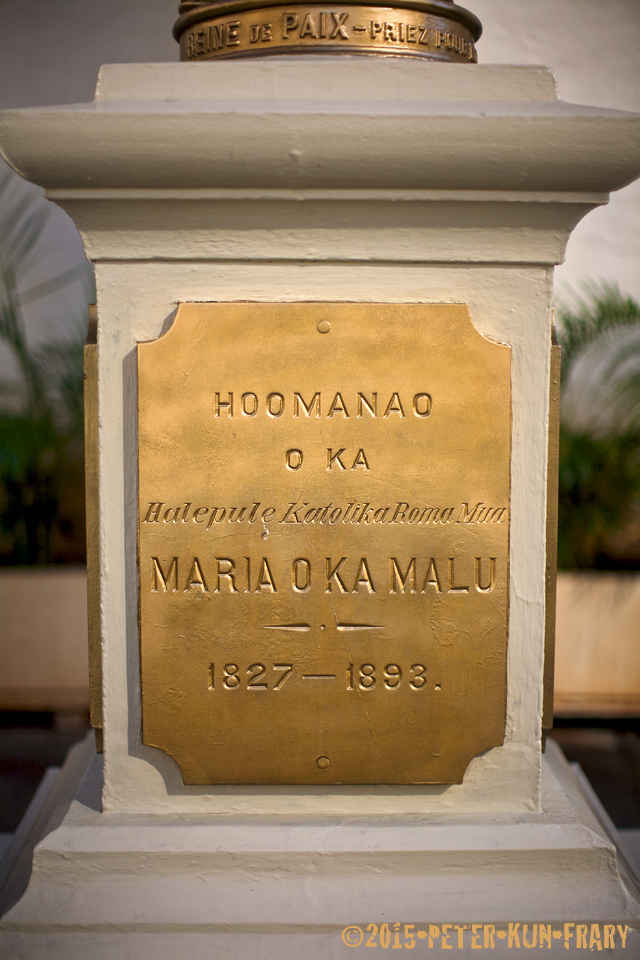
Pixel Level Detail | EOS
5D and EF 50 1.2L USM at 1.2
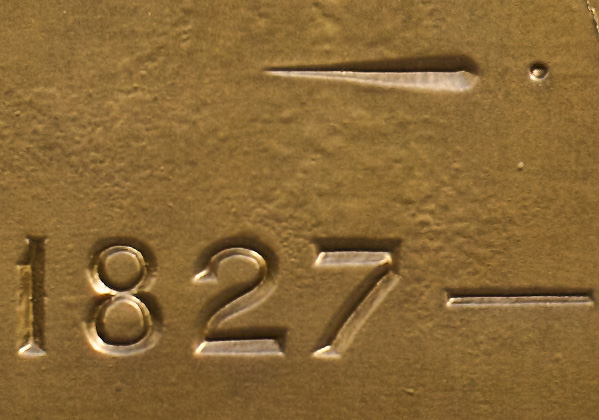
Compared
to a zoom the optical design is simple,
with 6 groups and 8 elements,
although it sports an aspherical
element. Flare
is well controlled and,
unlike most zooms, I've had no flare problems with
sunsets or bright lights in the frame.
Light Fall-Off
Like all large aperture primes there is light fall-off when used wide open. Stop down a little and it's gone or reduced considerably. I rarely noticed light fall-off even at F1.2 save white wall tests. However, DPP and Aperture are very good at auto correcting light fall-off if it bothers you.
If you shoot with a APS-C body, e.g., Rebel, 40D or 50D, light fall-off is a moot point as 40% of the image circle is cropped out.
Coma
One of the things that really burned me about my EF 50 1.4 USM was heavy coma at larger apertures, rendering streetlights as comet like shapes along the periphery. Unfortunately, coma is present in the EF 50 1.2L USM as well, but shaped like birds (two wings). Specifically, the center is good wide open with periphery improving progressively as stopped down. So not a great lens for astronomy buffs but okay for city nightscapes at F4 and smaller.
Honolulu Harbor View | EOS 5D and EF 1.2L USM at F2.8. Winged coma is visible at F1.2 to 2.8 along the periphery, e.g., lights in the lower right.
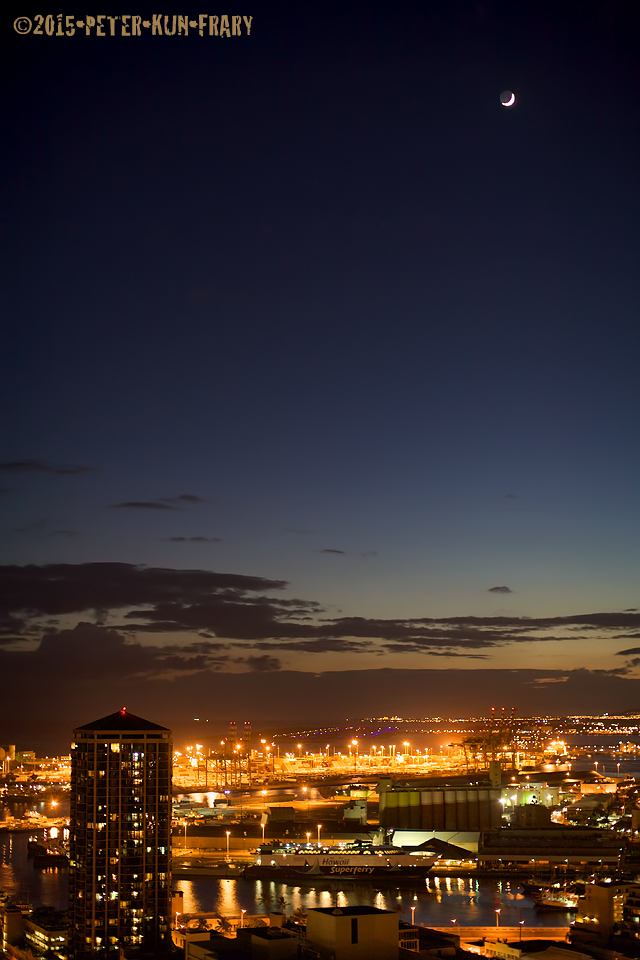
Bokeh
Most people buy this lens for the creamy smooth bokeh. The soft whirl of an out of focus background makes subjects pop. This 8-blade diaphragm maintains a pleasant circular shaped aperture even when stopped down with brilliant highlights in the background. The melting of background shapes and hues is strongest at F1.2, but is still prominent and pleasant stopped down to F2.8 or even F4 if your subject is close and well separated from the background. At F1.2 the images take on a quasi painterly quality due to reduced contrast. A glowing quality is typical within the swirl of ultra smooth bokeh.
Mall
Leaves | EOS
5D, EF 50 1.2L USM | F1.2, 1/1600

DOF is so shallow at F1.2 focus must be perfect. Even being off a few millimeters spoils the image. It took me a long time to get used to precisely picking the point of AF. I had to disable auto AF point selection for most subjects except those at infinity focus.
Queen's Court | Honolulu | EOS
5D MKII and EF 50 1.2L USM | F1.2
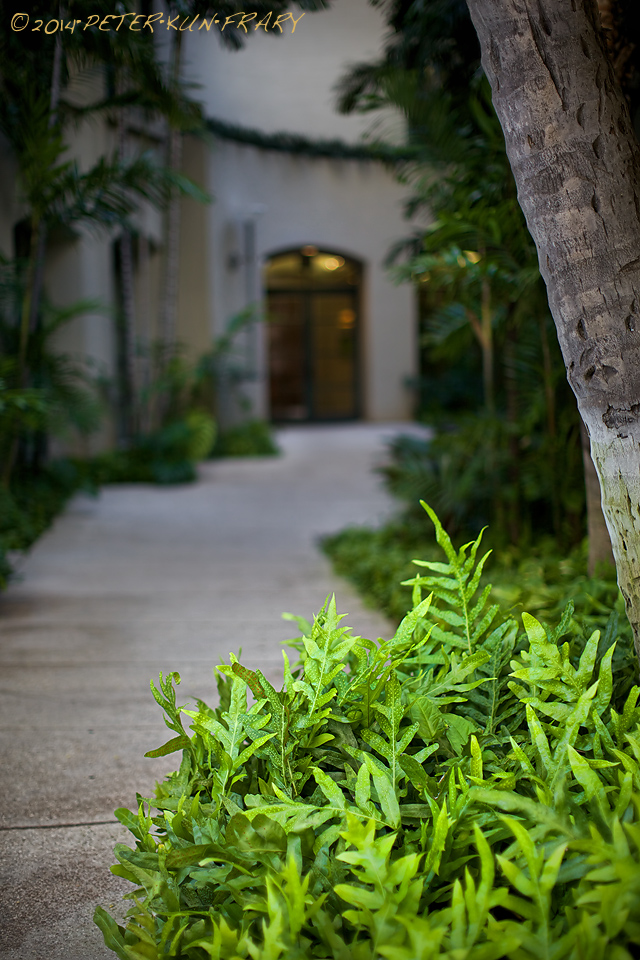
Normal
Perspective
Like wide angle lenses, objects nearer in the frame, i.e., within a couple feet, appear slightly exaggerated in size. For example, full or upper body images look natural. But step closer for a head and shoulders portrait and the nearest facial feature, e.g., nose or chin, may appear unflatteringly broad and flat. The above mentioned is why the 50mm optic is generally not regarded as a portrait lens on full frame cameras. Instead, it shows off your subject best when you step back a little and feature the subject within its surroundings.
Mall Leaves | EOS 5D, EF 50 1.2L USM | F5.6, 1/800, ISO100
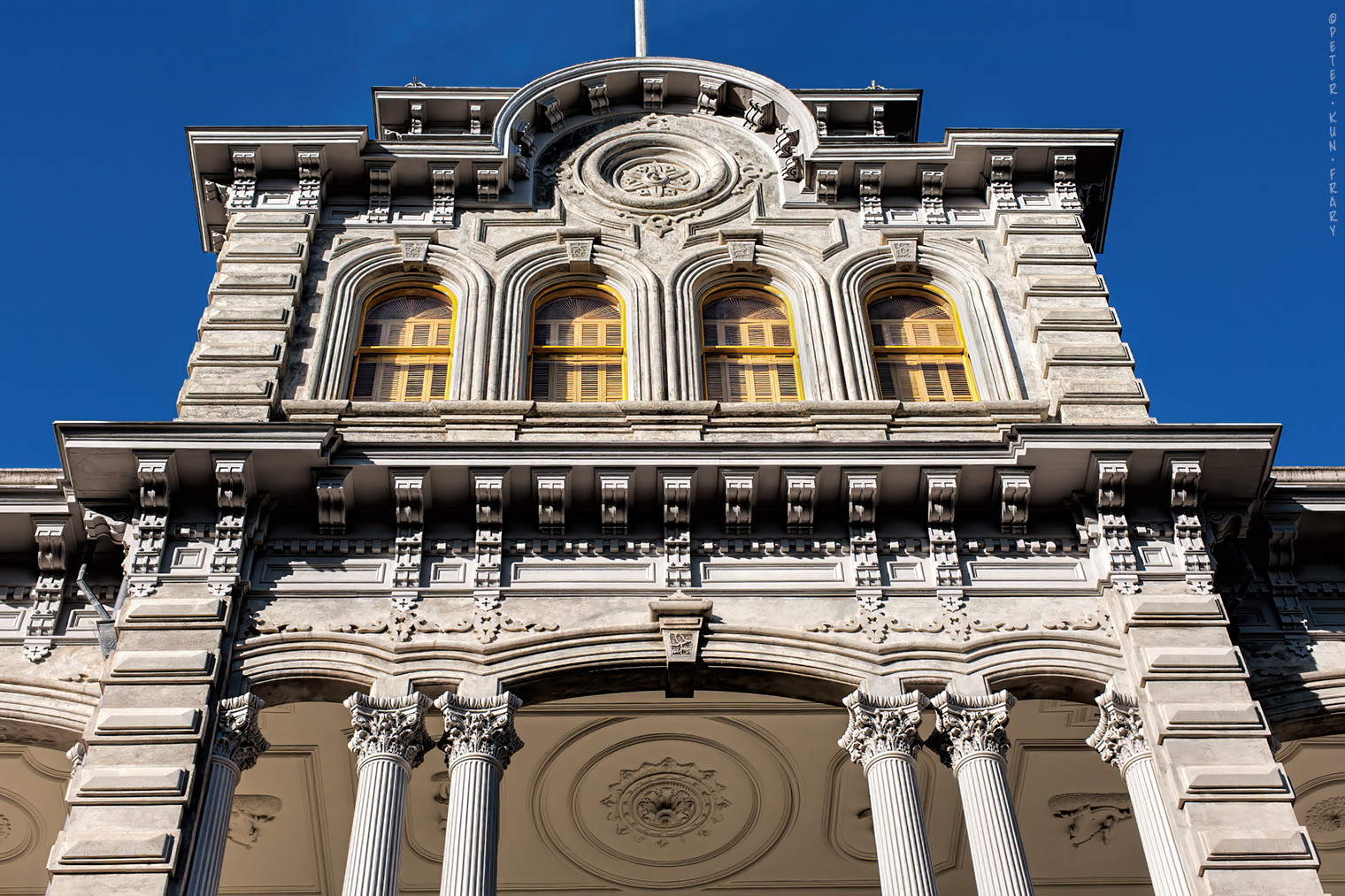
 Final Blurb Final Blurb
This is the daddy-o grande of normal primes: well made, sharp and a riot of creamy bokeh. On the other hand, most photographers would be well served by the less expensive EF 50 2.5 CM, 50 1.8 STM or 50 1.4 USM. But if you're a hard-core available light hound and bokeh lover, the EF 50 1.2L USM just may be your ticket to the Promised Land. Hallelujah!
 Source Materials Source Materials
Canon EF
Lens EF50mm F1.2L USM Instruction
Manual. Tokyo:
Canon, 2006 (CT1-7567-001).
1/10/2009 | 10/07/2023

©Copyright 2009-24 by Peter Kun Frary | All Rights Reserved
|